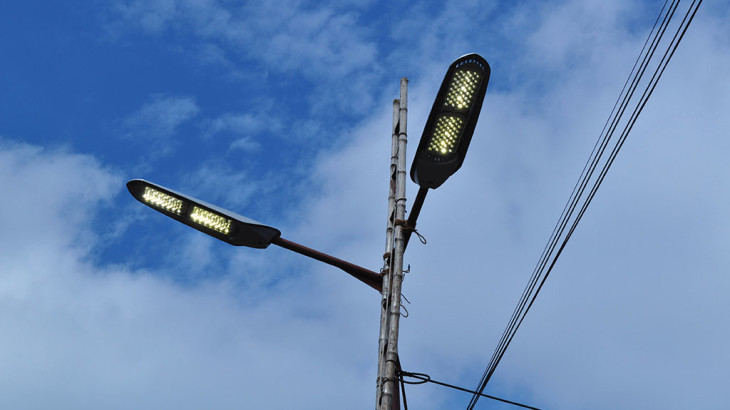Before the turn of the century, less than ten percent of the world’s population lived in cities. By 2050, it is estimated that over two-thirds of the world will live in cities. As urbanization growth continues, so too does the need for new municipal lighting solutions. “Today, cities consume more than 70 per cent of the world’s energy supply.” With regard to urbanization, over the past few decades, this has caused U.S. city streets to become brighter. The justification for brighter city lights is safety. Now, exterior business lighting and municipal street and park lighting, for example, is often 10 times brighter than they were 20 years ago. As a result, we’ve gradually become exposed to light pollution, which is growing 6 percent every year. Smart lighting, a new lighting solution, hopes to remedy both issues of over-consumption of energy and light pollution.
Economic Benefits of Smart Lighting
One of the big lighting trends we reported on earlier in the year was the inclusion of the Internet of Things through LED lighting, giving more control to municipal authorities on how to control light sources. The idea is similar to businesses that optimize energy efficiency through automatic sensors—lighting that turns on or off depending on the occupancy of a room. “Connected lighting provides the right amount of light precisely where it is needed and when it is needed, enabling municipal authorities to save energy and maintenance costs and to reduce obtrusive light.” Better yet, LED lighting has energy savings potential of 40 percent, which means we’ll know our tax dollars aren’t being wasted on lighting our city streets, just on a lot of other things.
One of the most sustainable cities in the world, Copenhagen, is testing out a new smart lighting system, which hopes to set a new frontier for smart lighting solutions. Its new system experiment, the Danish Outdoor Lighting Lab (DOLL), controls street lights from a central hub with real-time data on all the energy each street light consumes. The center of the experiment focuses on energy efficiency, “with roads featuring lamps that brighten as cards, cyclists, and pedestrians approach, but stay dark when the sensors don’t pick up any activity.”
Many cities across the world are actively pursuing similar LED solutions to reduce carbon emissions, save money, and improve safety. As you may know, Los Angeles is famous for switching out its 140,000 streetlight fixtures with LEDs. According to the City of Los Angeles’s Bureau of Street Lighting “The expected savings of the new lights has exceeded the initial program goals. Energy use has been reduced by 63.1 percent and carbon emissions have been reduced by 47,583 metric tons a year.” Not to mention, it just looks a lot better.


Light Pollution, Safety, and New Solutions
Many cities still rely on old, outdated orange-colored light because before LEDs, it was the most cost-effective solution. You see this vividly from the picture of LA’s streets above. The reason they are orange is because of the chemical sodium. Sodium, when excited by electricity, emits a lot of orange light, which made it a very cheap and efficient way to illuminate large areas (The Naked Scientist). Newer lighting options, such as fluorescent lighting and LEDs, however, produce white light. Furthermore, “mini-jet lag, due to our bodies following an unnatural 24-hour light/dark cycle. Light pollution has gradually increased because it was thought that more light would lead to more safety. However, new studies show that bright lights only make us feel safer without adding any actual safety. A 2008 study by PG&E concluded “either there is no link between lighting and crime, or that any link is too subtle or complex to have been evident in the data.”
This is why LED smart lighting is becoming the center of focus. LEDs are revolutionary for the fact that they have much more control capabilities. With controls, we can measure how much light is emitted, and whether a light needs to be turned on or dimmed, depending on pedestrian or vehicular activity. This would solve two issues: updating sodium-based lighting to LEDs, saving millions of dollars in lighting energy expenses, and gradually reducing light pollution.
While smart lighting technology is still in the early stages of development, over the next decade, we may see a huge shift in our how cities look and feel.




